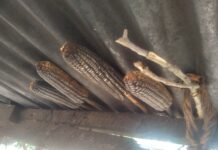By Okong’o Oduya
Busia County, Kenya: Maximila Omieno, is a cassava farmer from Nambale Sub – County in Busia. She reveals for 14 years she had been doing farming as a business but of late the business has not been doing well attributing the loss to the cassava related diseases.
Omieno says the disease is affecting the leaves from outside as well as eating up tubers causing them to rot. According to her, it is through cassava farming she managed to educate her second born child throughout secondary education among other projects.
She is a worried woman what will happen to her family now that the crop is no longer doing well.
“I did cassava farming as a business for the last 14 years. I could sell the tubers as food and stems as seed. Through it, I dug water well and paid school fees for my second born child throughout secondary education at Madende Secondary school. There was enough food in my home but when the diseases attacked the cassava the produce is discouraging.
The disease attacks cassava leaves and stems and when you check the tubers, they are thin and black spots in the tuber with the sign of rotting.” She said.
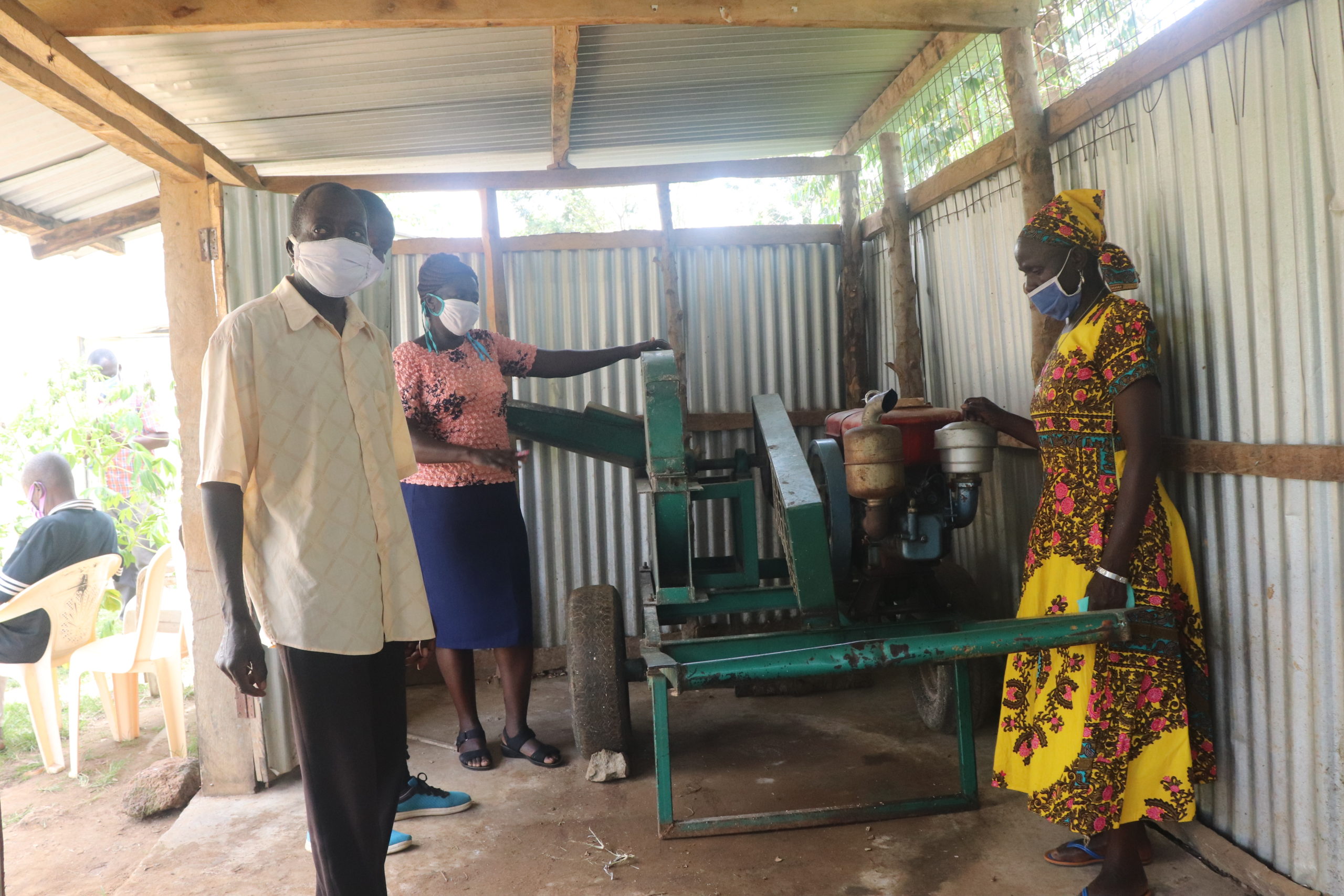
The same sentiments were echoed by Vincent Masinde and Enkarigo Otwane, cassava farmers who supply their produce to Tangakona commercial village farmer’s society.
They are now calling upon Kenya Agricultural and Livestock Research Organization (KALRO) to develop cassava varieties that will be resistant to diseases such as cassava mosaic and cassava brown streak diseases.
“Cassava produce has been adversely affected. You may plant cassava on half an acre of land with hopes harvesting big but as the plant continues to grow you start witnessing leaves shrinking and when you pull the tubers is when you will realize they are thin and rotten. Forcing you to select what seems to be good products and throw away the rest which is a loss,” said Vincent Masinde.
Catherine Otaga is an expert and cassava processor at Tangakona commercial village farmer’s cooperative society says when they started buying cassava from farmers in 2017 they supplied 15 tons of processed cassava to True Trade. They buy raw cassava from farmers at Sh6 and sell it at ksh45 per kilogram.
In 2018 they increased the production to 45 tons of cassava, but since then the production has drastically declined.
According to her last year they supplied 37 tons of cassava and this year they only raised 1200 kilograms of processed cassava, way too low compared to what they were producing when they started.
She blamed cassava mosaic disease and cassava brown streak disease-causing massive loss.
Catherine says initially more than 100 farmers could supply raw cassava in a day to their milling plant but due to lack of enough cassava caused by the two diseases, they can get 3 or 4 farmers bringing cassava tubers for processing per day.
Catherine says since 2017 the society has generated more than ksh2.2M which they used to obtain a piece of land at Tangakona where they conduct their operations from, purchased milling and another drying machine to help in processing the cassava,
Her worry is with the current trend of cassava production low cassava production due to diseases that have severely affected its crop production.
Mr. Otwane Otwane is calling upon scientists and researchers such as KALRO and other agencies to do research and find varieties of cassava that will be resistant to diseases adding that as a county they can’t afford to go without cassava since it is the staple food in Busia County.
Researchers in Kenya in partnership with other countries are working on experiments to develop varieties that will address the challenges facing the crop today such as diseases.
Professor Douglas Miano is a lead scientist; country investigator in developing cassava that is resistant to diseases says the project aims to find ways of addressing diseases that affect cassava farming such as Cassava Brown Streak Disease (CBSD) and cassava mosaic disease CMD).
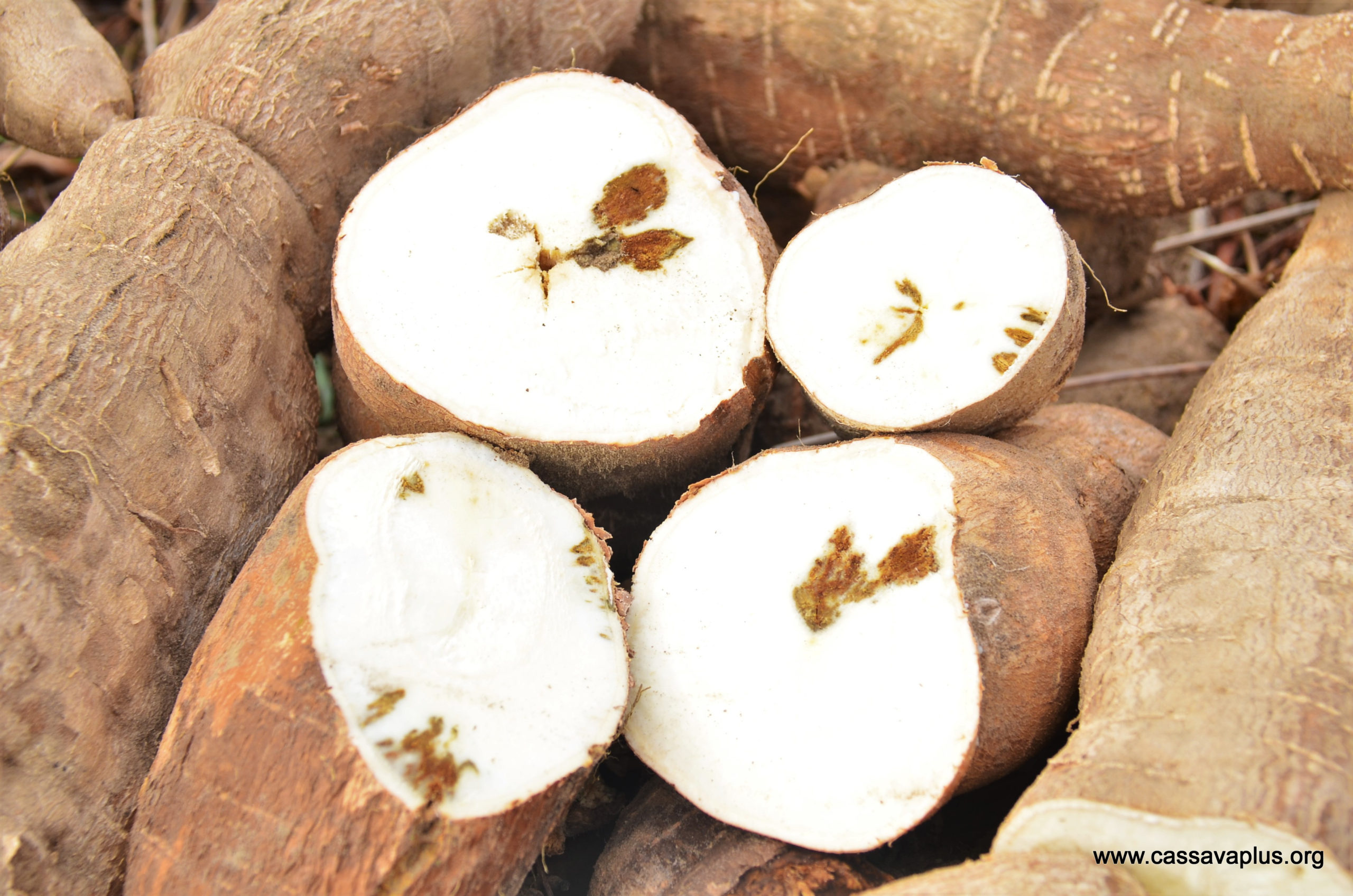
However, Miano says Cassava Mosaic Disease has been managed by the use of the conventional method and the current program is to find a way of managing CBSD which seems to be the major challenge facing the cassava production today not only in Kenya but across Africa by using the modern Biotechnology.
“The main disease that affects cassava production in the region are basically two, we have the cassava brown streak disease and the cassava mosaic disease. Cassava mosaic disease has been managed to some extent using the conventional method.
The cassava brown streak disease has been having a challenge because we don’t have the resistance that can be used for breeding, and this is why we settled for modern biotechnology as a way of managing CBSD,” he said.
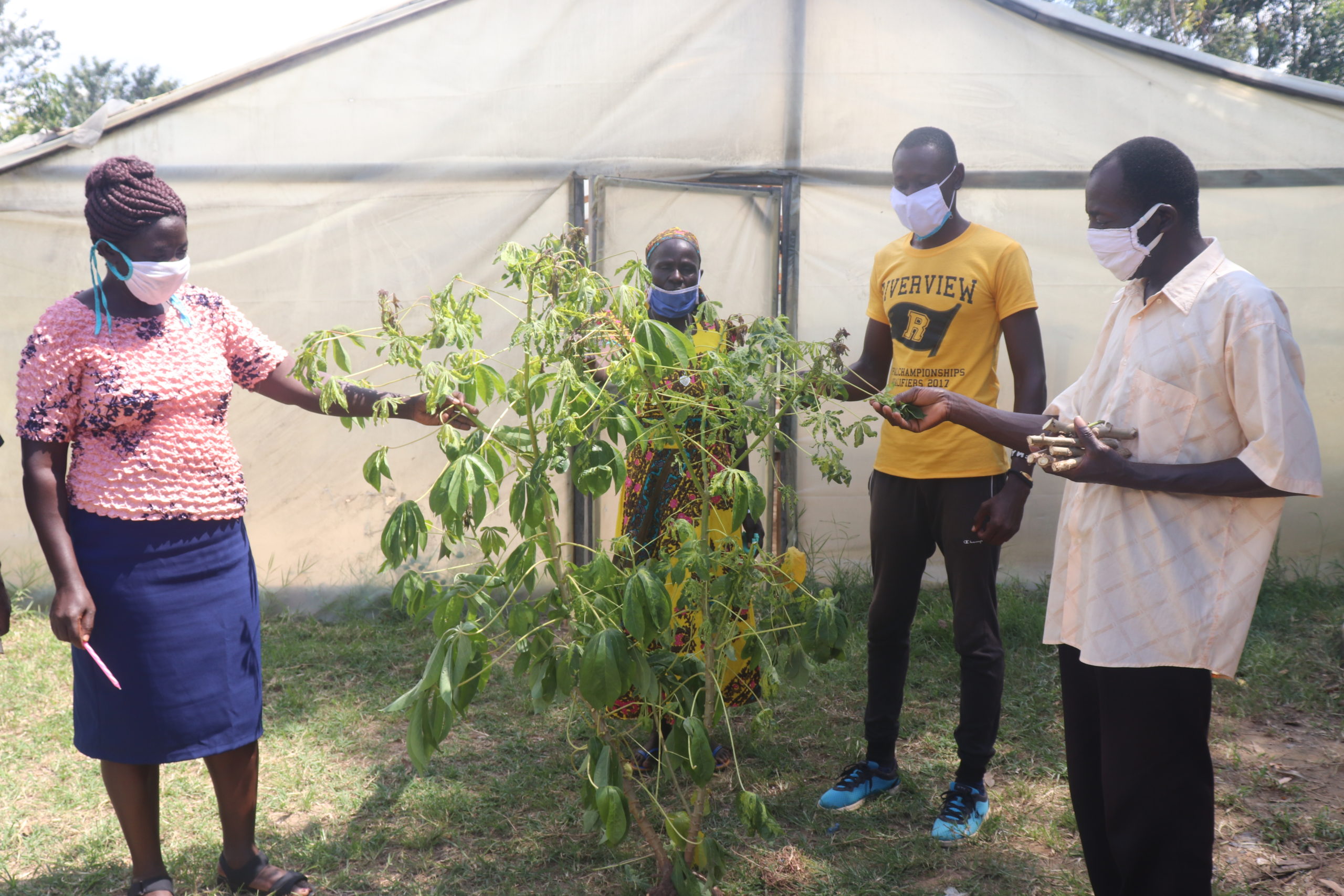
The project that was started in 2008 has been undergoing various stages trying to find the best technology to be used in fighting the disease and finally the regulatory technology was arrived at which will be regulated by National Bio-safety Authority before it is adopted.
After a number of experiments, Miano says they managed to come up with line 446 that showed a high level of resistance to CBSD which can be used to develop other varieties of cassava that will be taken to farmers.
“We were able to taste cassava we developed in the laboratories, greenhouse and eventually field and we were able to come up with one specific line that is called line 446 that has shown a high level of resistant to CBSD and we can also be able to use that line to develop other varieties that can be taken to farmers for cultivation,” he explained
He further noted that they have already submitted the application to the National Bio-Safety Authority, the body that is mandated to assess and prove its safety not only to human consumption but also to the environment.
And for the body to get to that level it is required to engage the public for participation before making their recommendations.
Dr. Catherine Taracha, Center director, KARLO Bio-Technology Center, singled out Western, Coast, East and Central regions in Kenya as the only parts that actively engage in cassava farming.
According to her, the Western region produces up to 60 percent of cassava, coast region produces 30 percent while Eastern and Central Kenya produce 10 percent respectively.
However, she noted that most of the farmers in Kenya are struggling with how to control cassava related diseases such as cassava brown streak disease and cassava mosaic disease, although cassava mosaic disease has been controlled.
“Although cassava is of great importance to the economy, farmers still struggle with two major cassava diseases challenging its production. Cassava mosaic disease has been successfully controlled by cassava breeders, wherever CBSD up to date still a challenge to farmers adding that the disease can only be recognized when the roots are harvested and find rooting between the roots,” she noted
She assured the farmers that cassava that is resistant to cassava brown streak disease is safe to be used after an evaluation carried out on the crop based on international food, feed, and environmental safety guidelines which found this cassava to be very safe without changing plant characteristics without negative effects to the environment.
Cassava is rich in calories, carbohydrates, and iron as a good source of energy.
Incorporating cassava into a controlled healthy diet menu has turned out to have many positive effects on health including helping in weight loss. Cassava which is rich in dietary fiber is the right choice if you can’t wait to lose weight. Cassava can make you feel full for a longer period of time reducing the urge to constantly go for snacks which in return leads to weight gain.
The presence of vitamin B2 and riboflavin in tubers is useful for curing headaches and migraines. Eating cassava can help reduce constant migraine attacks.
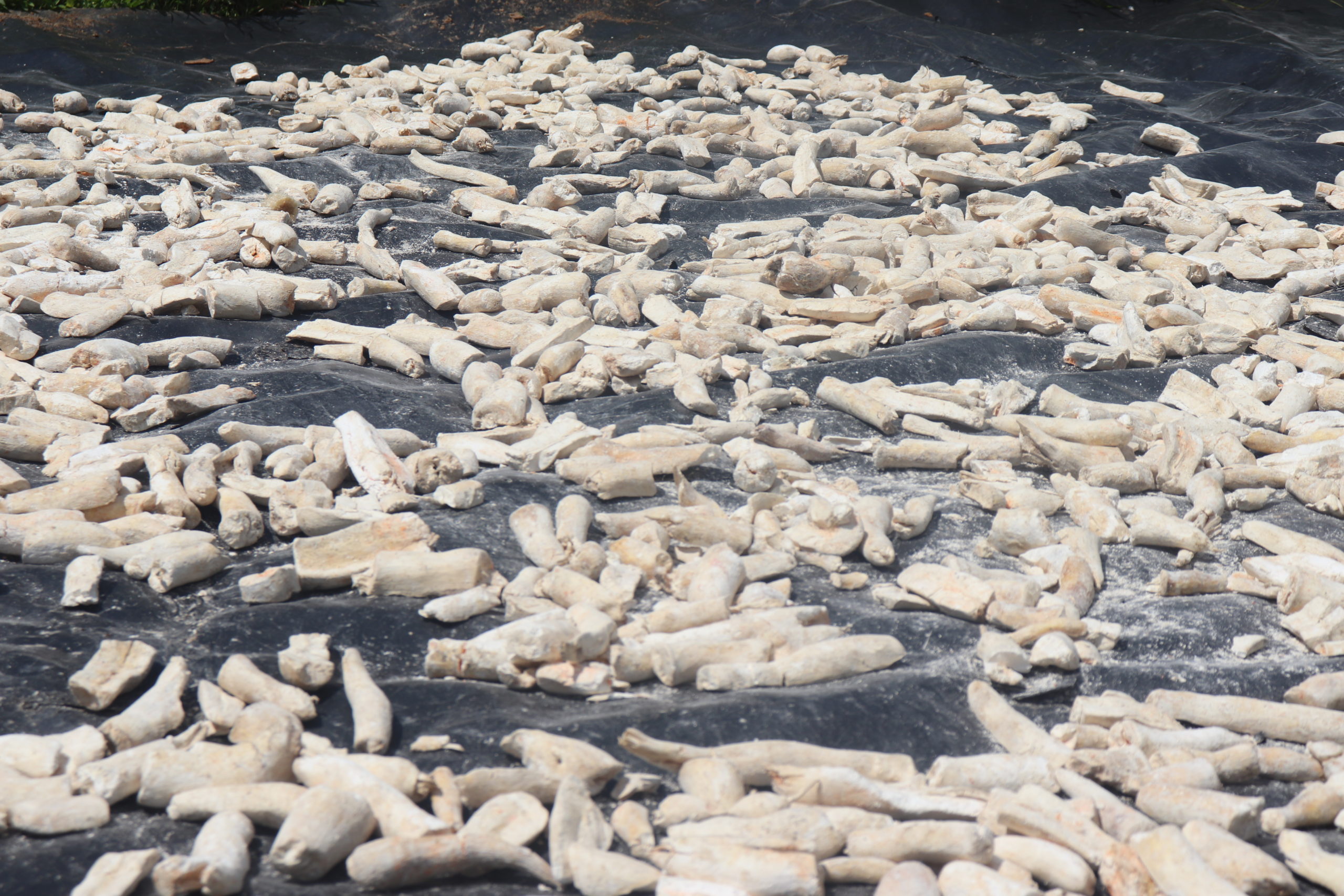
Professor Dorrington Ogoyi is the chief executive officer National Bio-safety Authority, the regulatory agency that is charged with the responsibility to regulate GMOs related research in the county to facilitate responsible research that minimizes the risk that is paused to both human and animal health and to the environment adding that their mission is to ensure and assure safe development, transfer and use of genetically modified organisms in Kenya.
According to him the cassava research project complied with all the needed regulatory requirements in all the stages they have passed through starting from the laboratory, greenhouses, and in the field.
Ogoyi says the body cannot allow the project under experimentation to enter the food chain before it fully undergoes all stages, which they did to GMO cassava not only in Kenya but also in Uganda.
“For those who may not be in the picture, essentially when the projects that are under experimentation they are not supposed to enter the food chain so there are containment requirements that is compliance with how to handle such materials and that what guided the experimentation with vidicus that is GM cassava and I can confirm they did that both in Kenya and Uganda,” he noted
Ogoyi admits that getting approval for GMO related products in Kenya has been a major challenge since most people do not understand the technology behind it resulting in opposition.
He says BT maize and BT cotton were among the first products to be introduced by the use of technology but they have not picked up due to one reason or the other.
He believes the technology that is involved is the one that makes the products receive opposition.
“Cassava being the fourth product that we are receiving an application we will probably have an easier path than the other three because people are increasingly people understanding this technology better than before but in terms of direction it’s very clear where we are and where we want to go.” He said
According to him, the final product will be expected to the farmers after five months of experiments in the field for two seasons of farming somewhere in 2022.
Juma Mohammed roots and tuber crops strategist noted that they recently launched a strategy roots and tuber crop where cassava was the targeted crop.
In the strategy, Juma says they developed four objectives to promote cassava farming, processing, and marketing which including an institutional structure that addresses mobilization to farmers and farmers group on how to grow the crop and benefit from it.
The next strategy is looking at the production aspect and how the farmers will benefit from the new variety.
The third strategy addresses the marketing and value addition of the crop and the last strategy is addressing the issue of gender, where every person is involved in planting and processing the cassava without discrimination basing on gender.
He noted that due to lack of enough public sensitization on the economic relevance of the crop, cassava was mistakenly classified to be a poor man’s crop.
In 2015 Busia County government allocated more than ksh15M to construct and equip cassava processing plants in Simba chai, Teso south to help in adding value to cassava from farmers stalled since then.
The plant was to serve 15,000 cassava farmers in Busia and neighboring counties.
Cassava is one of the major factors in food security not just in Kenya but across sub-Saharan Africa. Despite its great potential as a food security and income generation, few people in Kenya have embraced the crop. The majority still believed it is a poor person food crop.




